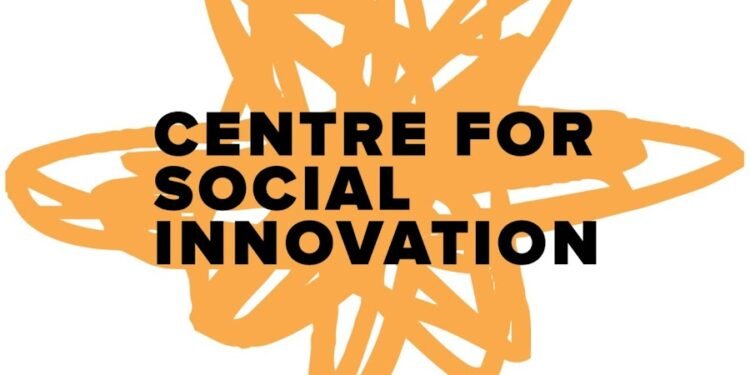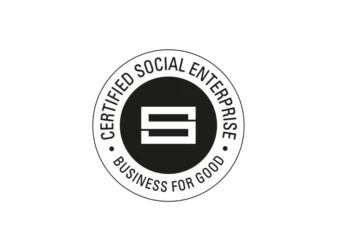What if solving society’s biggest challenges required more than just good intentions? What if the real key to creating lasting change lies in building ecosystems where innovators can thrive together?
Founded in 2004 in Toronto, this organization has pioneered a new approach to tackling social and environmental issues. It brings together passionate change-makers under one roof, creating spaces where collaboration fuels progress.
The mission focuses on catalyzing meaningful transformation through shared workspaces and incubator programs. Under CEO Tonya Surman’s leadership, it has grown into a thriving community hub.
This model demonstrates how physical spaces can become catalysts for systemic change. The approach has inspired similar initiatives worldwide, proving that innovation thrives in connected communities.
Key Takeaways
- The organization was established in 2004 with a focus on collaborative social change
- It creates physical spaces that foster innovation and entrepreneurship
- Leadership includes experienced social innovators and community builders
- The model has global relevance for addressing complex challenges
- Community bonds and innovative financing support its sustainability
- It serves as an incubator for ventures creating positive social impact
- The approach connects diverse sectors for greater collective impact
Understanding Social Innovation and Its Importance
How do we create lasting solutions for society’s most complex problems? The answer lies in understanding a powerful approach that transforms how we address challenges.
This method goes beyond temporary fixes. It seeks to change the very systems that create problems in the first place.
Defining Social Innovation in Today’s World
Social innovation means developing new ideas that meet social and environmental needs. These solutions work better than what exists today.
They are more effective, sustainable, and fair. This approach creates positive change for communities and our planet.
Cutting-edge research helps leaders navigate challenges. Studies in this field provide practical tools for meaningful transformation.
How Social Innovation Differs from Traditional Approaches
Traditional business focuses mainly on profit. Government approaches can get stuck in bureaucracy.
Social innovation targets systemic change. It looks at root causes rather than symptoms.
This differs from social entrepreneurship too. While entrepreneurship builds individual ventures, innovation seeks broader societal transformation.
It involves cross-sector partnerships and community engagement. Collaboration drives meaningful impact where single efforts might fail.
The Role of Social Innovation in Addressing Global Challenges
Our world faces pressing issues like climate change and inequality. Social innovation offers powerful solutions to these problems.
Initiatives like Climate Ventures show how this works. They address environmental challenges through entrepreneurial approaches.
This connects directly to global goals like the UN Sustainable Development Goals. The field contributes to progress on multiple fronts.
New trends like impact investing reflect the evolving landscape. These approaches create sustainable change through innovative financing.
Research and thought leadership continue advancing the field. They provide both academic knowledge and practical applications for change makers.
Programs and Initiatives at the Centre for Social Innovation
How does an organization move from concept to concrete impact? Through a diverse portfolio of initiatives that nurture social transformation.
This ecosystem of programs bridges theory with practice. It creates pathways for meaningful change across multiple sectors.
Educational Programs and Curriculum Development
Learning opportunities form the foundation of capacity building. Entrepreneurship 101 has trained over 150 members in essential business skills.
Agents of Change focuses specifically on youth engagement with Sustainable Development Goals. Both programs emphasize practical application.
Curriculum development integrates cutting-edge approaches. These include impact measurement and human-centred design methodologies.
Systems thinking and cross-sector collaboration are core components. This creates holistic learning experiences for participants.
Research and Thought Leadership
Academic publications and case studies contribute significantly to the field. They document successful approaches and lessons learned.
This research provides valuable insights for other organizations. It helps advance collective understanding of effective strategies.
Thought leadership events bring together experts and practitioners. They facilitate knowledge exchange and innovation diffusion.
Community Workspaces and Collaborative Environments
Physical spaces like CSI Spadina and CSI Annex serve as innovation hubs. They host diverse groups working toward common goals.
Nonprofits, charities, for-profits, and activists share these environments. This cross-pollination sparks unexpected collaborations.
Member organizations like Water Rangers and TechSoup Global demonstrate this synergy. Their shared presence creates networking opportunities.
Regular events and seminars build community connections. Workshops on social enterprise management develop essential skills.
Incubation Support for Social Ventures
Climate Ventures represents a specialized environmental incubator. It accelerates early-stage entrepreneurs addressing climate challenges.
Comprehensive services include strategic guidance and financial support. Programmatic and administrative assistance ensures venture success.
Access to a network of like-minded organizations creates valuable partnerships. This ecosystem approach multiplies individual efforts.
The Community Bond model demonstrates innovative financing approaches. It has successfully funded expansion while engaging community investors.
These incubation services help scale impact through supported ventures. They transform promising ideas into sustainable solutions.
Measuring Impact and Success Stories
How do we know when good intentions become real results? The proof lies in measurable outcomes and inspiring stories of transformation.
This organization tracks progress through multiple methods. They combine data with powerful narratives to show their work’s effect.
Case Studies of Transformative Social Change
StopGap Foundation demonstrates remarkable accessibility impact. Their colourful ramps make businesses accessible to everyone.
This initiative has placed thousands of ramps across communities. It changes how people think about inclusion in public spaces.
Cycle Toronto advocates for better urban cycling infrastructure. Their work has influenced policy and created safer streets.
Both organizations grew through incubation support. They show how focused assistance can scale community solutions.
Research Publications and Academic Contributions
Published studies add credibility to the organization’s approach. They document successful strategies and lessons learned.
Academic partnerships produce valuable field research. These collaborations advance collective knowledge.
Evaluation reports measure program effectiveness. They help refine approaches based on real-world results.
Thought leadership pieces share innovative concepts. This content influences practitioners across sectors.
Community Development and Network Growth
The network has expanded to include 800 member organizations. This growth reflects increasing demand for collaborative spaces.
Locations like CSI Annex become community anchors. They stimulate local economic and cultural revitalization.
Shared environments foster unexpected partnerships. Different groups discover common goals and complementary strengths.
Regular events build strong professional relationships. These connections often lead to collaborative projects.
Environmental Initiatives and Climate Ventures
Climate Ventures represents a specialized environmental program. It has accelerated 121 early-stage entrepreneurs since its launch.
These ventures address pressing climate challenges. They develop innovative solutions for a sustainable future.
Dedicated co-working spaces support environmental innovators. This specialized environment fosters focused collaboration.
The program offers comprehensive incubation services. Participants receive strategic guidance and financial support.
Community Bonds financed workspace expansion. This innovative approach engaged local investors in growth.
The model demonstrates sustainable financing for social purpose organizations. It creates shared ownership in community assets.
Over 17 years, this organization has built an enduring legacy. Its continued influence shapes the social innovation landscape.
Local innovations contribute to global solutions. They show how community-based approaches can address worldwide challenges.
Conclusion
Where do innovative approaches to social and environmental challenges find their footing? The Centre for Social Innovation demonstrates how collaborative ecosystems drive meaningful change.
This organization creates spaces where ideas become action. Its programs and incubators support ventures tackling pressing issues.
Initiatives like Climate Ventures show innovative solutions in practice. Community bonds represent creative financing models.
The impact extends beyond Toronto through research and network growth. Case studies document successful strategies for others.
Explore their resources to join this movement. Together, we can build a more equitable and sustainable world.
FAQ
What is the main purpose of the Centre for Social Innovation?
The organization supports individuals and ventures working to solve social and environmental problems. It provides resources, community space, and learning programs to help drive meaningful change.
How does social innovation differ from traditional charity or business models?
Social innovation blends entrepreneurial methods with a mission to create impact. Unlike traditional charity, it often aims for sustainable, scalable solutions. Unlike standard business, its primary goal is positive change, not just profit.
What types of programs does the Centre for Social Innovation offer?
Programs include educational workshops, incubation for new ventures, research initiatives, and collaborative workspace access. These offerings help innovators develop skills, test ideas, and grow their impact.
Can you give an example of a successful initiative supported by the Centre?
Many environmental and community-based ventures have launched with support from the Centre. These include local food security projects, clean technology startups, and programs addressing urban poverty.
How does the Centre measure the success of its supported ventures?
Success is measured through both quantitative metrics, like jobs created or carbon reduced, and qualitative outcomes, such as community engagement and policy influence. Regular impact assessments help track progress.
Is the Centre for Social Innovation only for startups, or can established organizations participate?
Both new and established organizations are welcome. The Centre offers programs and resources suitable for various stages, from early idea development to scaling existing operations.
How can someone get involved or access the Centre’s resources?
Interested individuals can join as members, attend public events, apply for incubation programs, or use shared workspace. Information on opportunities is available through their website and community newsletters.





